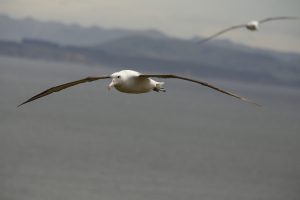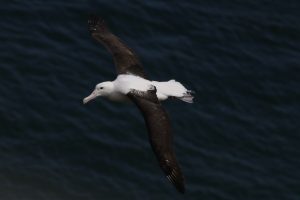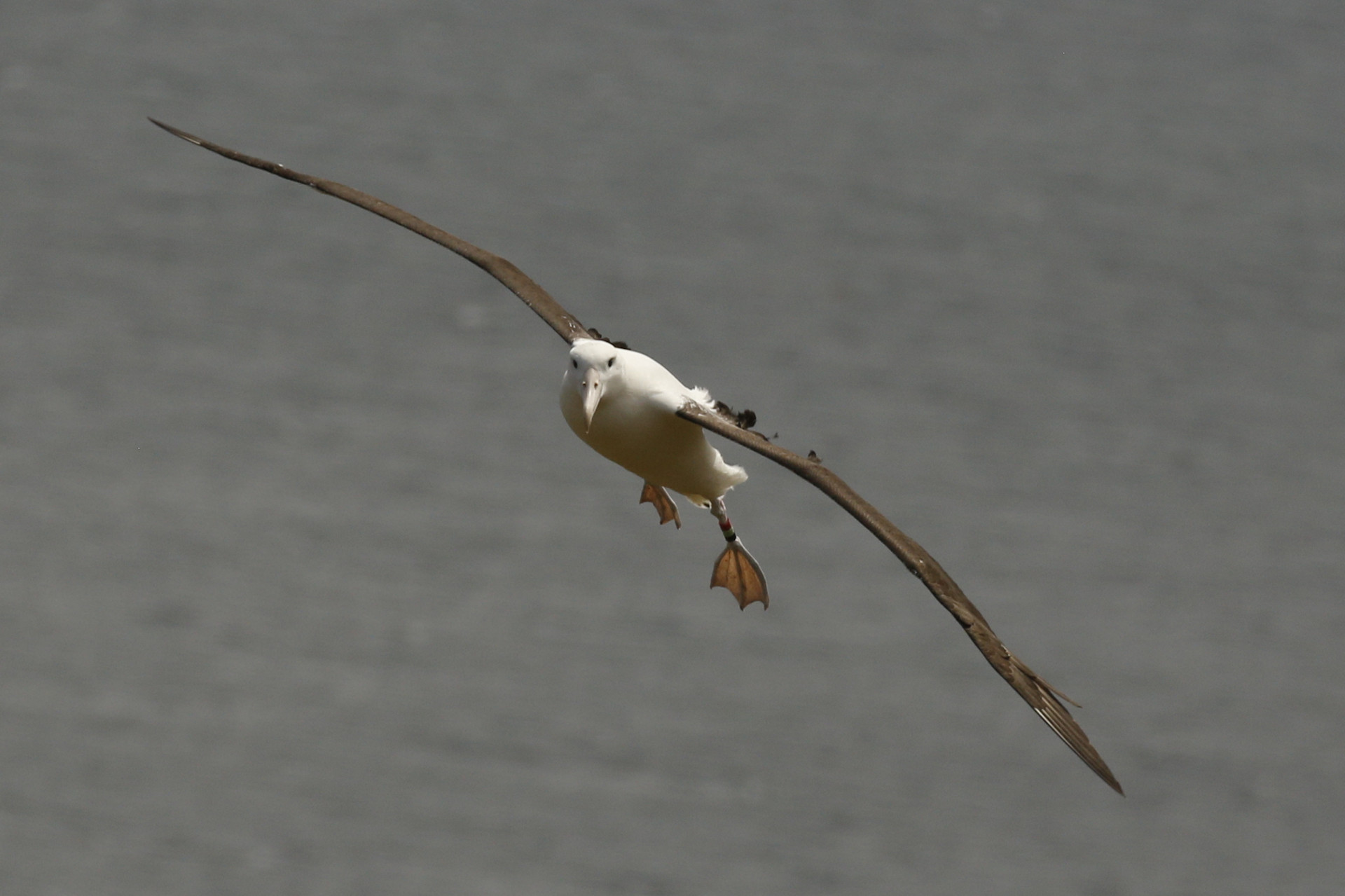Whilst in New Zealand over the Christmas 2016 I was privileged to observe and photograph the first Albatross I have ever seen.
This isn’t surprising as this amazing bird spends most of its life out on the open ocean far from any land and this is one of the only places in the world you can see them from land.
The Northern Royal Albatross only breeds in New Zealand and travels the Southern Ocean usually alone, wintering in South America, rarely landing anywhere until it continues around the globe back to New Zealand. They pair for life and the male usually arrives back first fashioning a nest to impress his partner. When she arrives, she inspects his efforts sometimes making final adjustments, sometimes making a completely new one and on occasions she has been known to make the male start building a new nest from scratch.
With a wingspan of over 10 feet they can ‘lock’ their wing joints so they can’t flap. This allows the bird to effortlessly use storm force winds gliding up to 70 miles an hour. When I say ‘effortlessly’ the heartbeat of an Albatross in flight has been measured to be the same as when resting on the nest! In fact they can semi-sleep during long flights.

I arrived at the Albatross Reserve on the Otago Peninsula near Dunedin on the South Island. Before being allowed to walk in silence up to the hide I was keen to see if I could spot any Albatross amongst all the gulls wheeling around the headland in the wind.
It didn’t take long.
There is was.
Massive, graceful with enormous wings locked and flexing with the strong gusts.
Once at the hide I got a proper view, including three birds sat on the ground on their nests. Watching the others wheeling around in the wind I noticed how the wings flexed soaking up the unpredictable gusts but also how the secondary trim feathers on the top edge ruffled, smoothing out the flight and gaining maximum power and lift.

The Albatross positively seemed to revel in it – the stronger the wind blasts the better. In fact scientists have discovered the undulating ‘S’ shaped flight is an incredibly economic way to travel long distances with very little effort. (I have seen Gannets in Ireland do the same)
Imagining the bird relies on the squally winds to achieve the great distances it needs to travel – it makes me wonder…
Is the only way we can move on any significant distance by way of the storms of adversity, danger or hardship?
If so, can we learn the way of the Albatross, to embrace and harness hard times for a positive big thrust forwards?
Harnessing the Storm
Majestic effortless ballet in the skies
Stretched out, giving it all you were designed for
Climbing, Wheeling, Dipping like a giant roller coaster
Rejoicing in Battering Gales and Roaring Storms
Dozing on the wing as you traverse the Oceans and on to New Horizons


